Cedar Rapids, IA Pollen and Allergy Report for Summer 2023
Pollen Allergy Trends in Cedar Rapids, IA
When is pollen lowest in Cedar Rapids, IA?

February
Lowest month total PPM
Avg. PPM
When is pollen highest in Cedar Rapids, IA?

April
Highest month total PPM
Avg. PPM
How does pollen in Cedar Rapids, IA compare to Iowa?
Cedar Rapids has a lower average PPM than the state of Iowa.
Cedar Rapids yearly avg PPM:
Iowa yearly avg PPM:
How does pollen in Cedar Rapids, IA compare to the USA?
Cedar Rapids has a higher average PPM than the USA.
Cedar Rapids yearly avg PPM:
USA yearly avg PPM:
Is pollen worse this year in Cedar Rapids, IA?
Spring 2023 was worse than spring 2022.
Spring 2023 PPM:
Spring 2022 PPM:
Average PPM in Cedar Rapids, IA
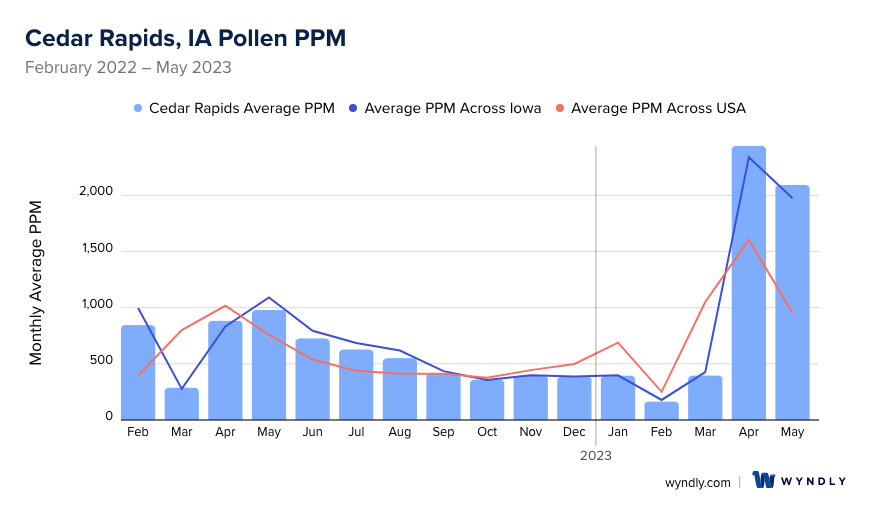
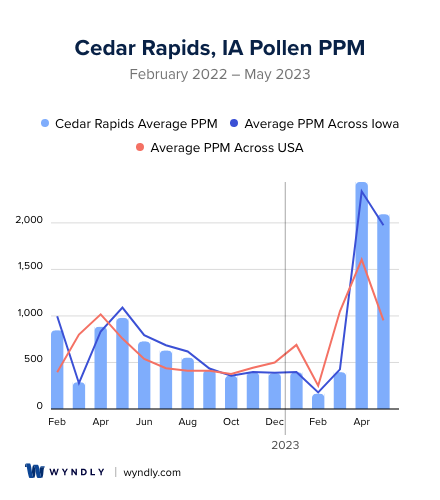
Cedar Rapids, IA Pollen and Allergy Breakdown by Month
Grass
When is grass pollen highest in Cedar Rapids, IA?
February has the highest grass pollen in Cedar Rapids, IA with an average PPM of
When is grass pollen lowest in Cedar Rapids, IA?
October has the lowest grass pollen in Cedar Rapids, IA with an average PPM of
Tree
When is tree pollen highest in Cedar Rapids, IA?
April has the highest tree pollen in Cedar Rapids, IA with an average PPM of
When is tree pollen lowest in Cedar Rapids, IA?
October has the lowest tree pollen in Cedar Rapids, IA with an average PPM of
Weed
When is weed pollen highest in Cedar Rapids, IA?
April has the highest weed pollen in Cedar Rapids, IA with an average PPM of
When is weed pollen lowest in Cedar Rapids, IA?
February has the lowest weed pollen in Cedar Rapids, IA with an average PPM of
Cedar Rapids, IA Pollen Monthly Breakdown by Pollen Type
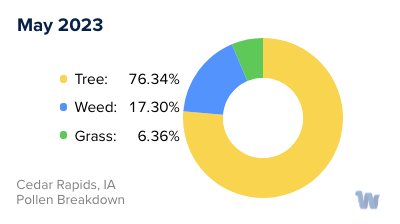
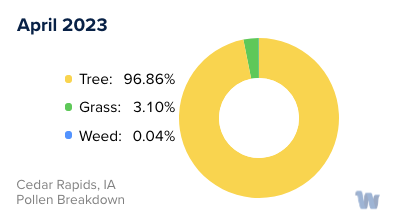
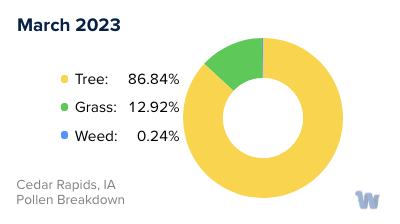
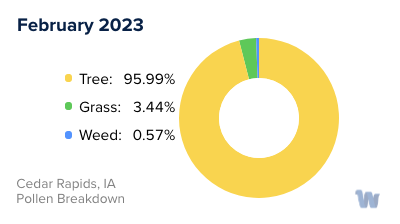
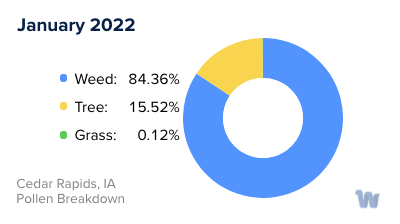
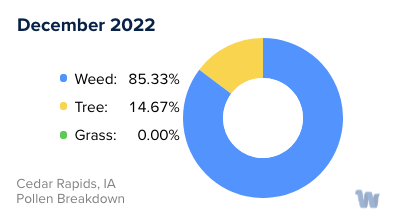
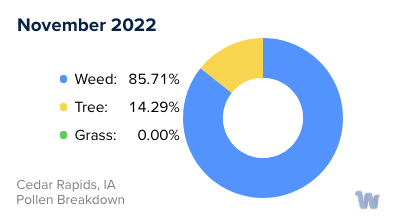
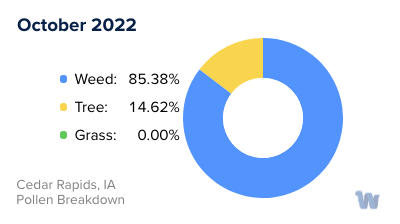
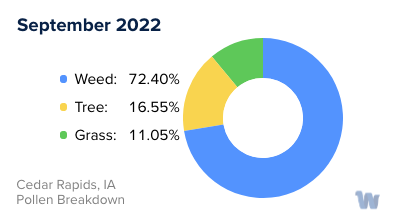
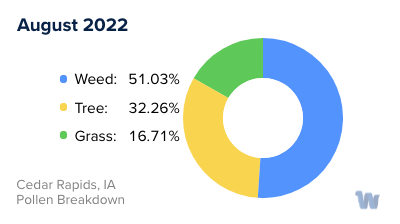
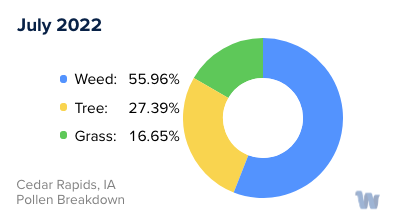
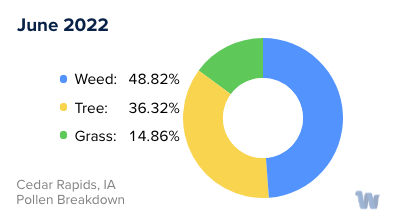
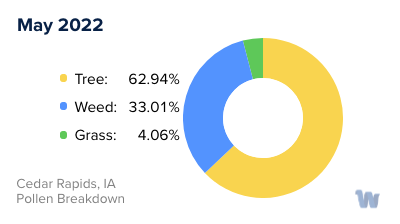
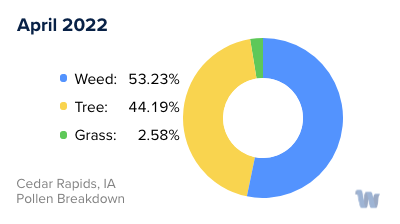
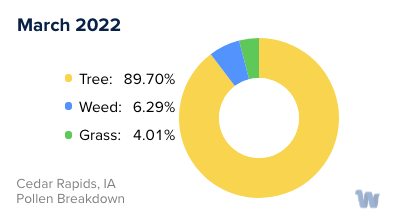
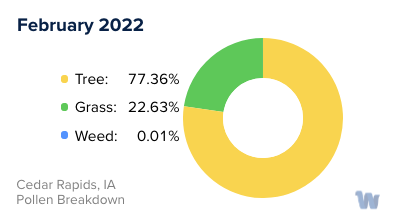
Pollen and Hay Fever in Cedar Rapids, IA
In Cedar Rapids, Iowa, the ebb and flow of the seasons bring about shifts in the types of pollen in the air, affecting those with seasonal allergies. The city is nestled in the heartland of the United States, a region known for its lush landscapes and diverse plant life, which unfortunately means a range of potential allergens throughout the year.
Spring in Cedar Rapids marks the onset of tree pollen season, which begins around late February or early March. The culprits during this season are primarily hickory, oak, walnut, willow, and ash trees, as they start releasing their pollen into the air. These trees blanket the city in a mist of microscopic particles, triggering allergic reactions in susceptible individuals. The tree pollen season usually tapers off and ends by May or June, giving some relief to the residents.
Following spring, summer introduces a new set of challenges for allergy sufferers in Cedar Rapids - grass allergies. The city sees a surge in the pollen count from bent, brome, orchard, and prairie grasses starting in May. Walking through a park or simply sitting in your backyard during this time could trigger sneezes, runny noses, and watery eyes. The grass allergy season extends until July, marking the height of summer.
As the summer heat begins to wane, fall takes center stage in Cedar Rapids, bringing with it weed allergies. The main triggers during the fall season are ragweed, wormwood, amaranth, and sagebrush. These weeds start releasing their pollen at the end of summer and continue until the first hard frost of winter.
Winter in Cedar Rapids provides a respite from outdoor allergies. The outdoor allergy season takes a hiatus with the arrival of the first hard freeze, allowing the city's residents to breathe a little easier. However, indoor allergies can still be an issue during this time.
Pollen allergies and hay fever in Cedar Rapids, like many other cities, are tied to the changing seasons and the diverse flora that each season brings. Understanding these seasonal shifts and the types of pollen predominant in each season can help those affected navigate the city and its surroundings more comfortably.

